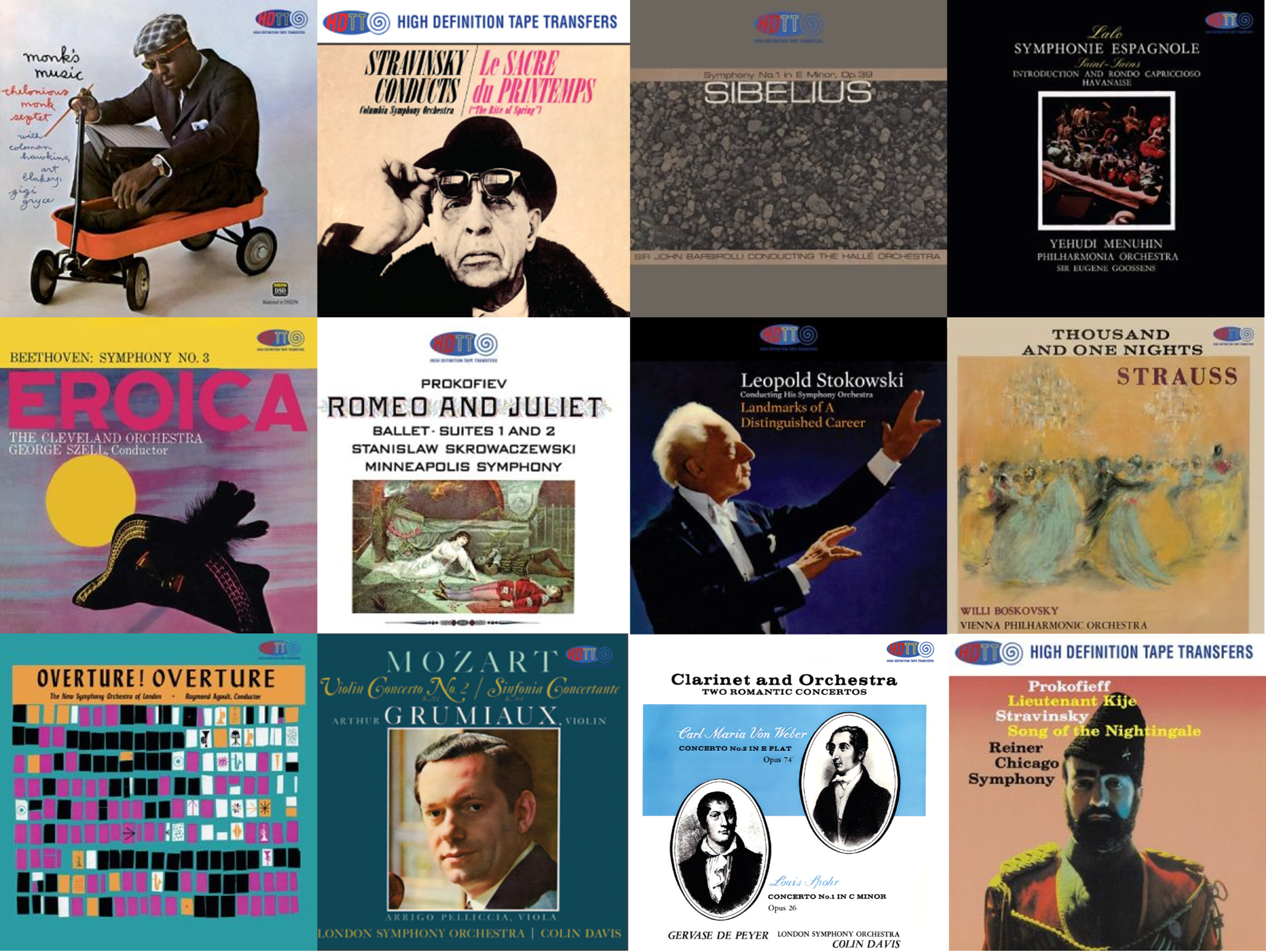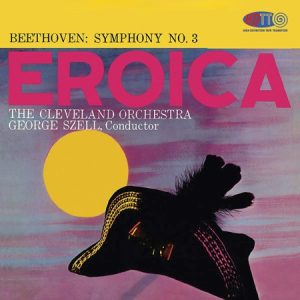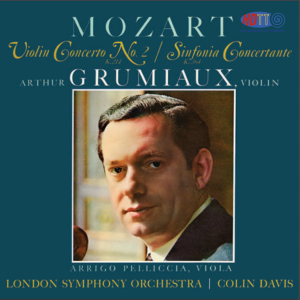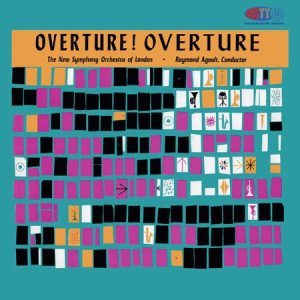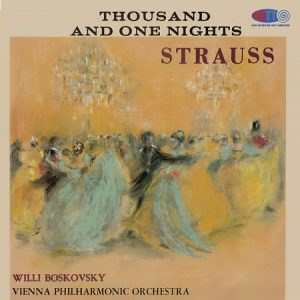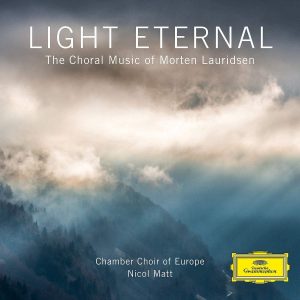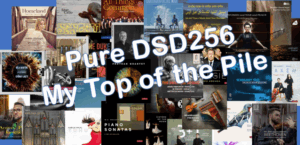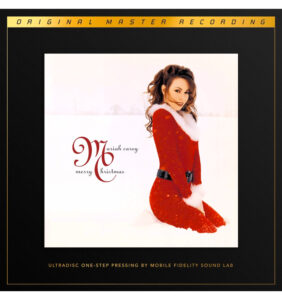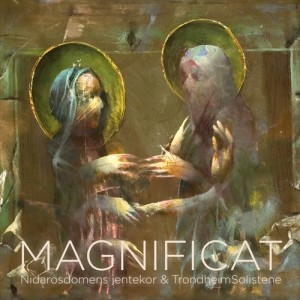High Definition Tape Transfers (HDTT) has been very busy these past few months with some excellent new releases of some of the best recordings from both classical music and jazz. I previously shared my thoughts about their DSD256/DXD reissue of Reiner's performance of Prokofiev's Lieutenant Kije and Stravinsky's Song of the Nightingale (reviewed HERE) which I consider a "must have" album for any classical music library. And don't forget the monster recording by Reiner of Mussorgsky's Pictures at an Exhibition (reviewed HERE), not to mention Monk's Five by Monk Five, Mulligan's Gerry Mulligan '63, and Rene Leibowitz's recording of Beethoven's Symphony No. 9 (all of which are reviewed HERE). In this article, we have even more special treats form HDTT, so read on...
Monk's Music, Thelonious Monk Septet. HDTT 1957 2023 (Pure DSD256) HERE
This landmark album from 1957 is perhaps the greatest album Monk released. Joining Monk in this album is Gigi Gryce (alto saxophone), Wilbur Ware (Bass), Art Blakey (Drums), Coleman Hawkins and John Coltrane (Tenor Saxophone) and Ray Copeland (Trumpet). And wow! Are they ever in top form. The collaboration between Monk and saxophonists Coltrane and Hawkins, in particular, is astonishing.
This reissue from HDTT is a transfer from a 15ips 2-track tape to Pure DSD256, with no PCM editing. As I have come to expect from HDTT's releases, the sound quality in this DSD256 iteration is superb. The sound is transparent, detailed, dynamic, and with virtually no noise (I don't hear any). If you have good quality DSD256 playback capabilities, this release is absolutely the one to get. Can't play DSD256? Well, get any of the other formats—in whatever iteration you can play this reissue, you will still have one of the best digital releases of this album that you will be able to find.
When making a Pure DSD transfer from tape, with no PCM editing, there can be challenges. In this case, there are two tape glitches that carry across in the transfer. They are minor and brief. Bob Witrak commented to me in an email, "Yes it is a glitch in the tape; I didn't want to do any PCM editing so I left it, it's the consequence when you go Pure DSD." And I say, great decision! Because the transparency of the Pure DSD is a marvelous thing to hear; it is lost once pulled into PCM for post-processing. I'll take this trade-off anytime.
As I said at the outset, this is one of Monks greatest albums ever pure and simple. If you want to explore classic 1950's Thelonious Monk, get this album, and then get Five by Monk Five (also from HDTT and reviewed HERE), Brilliant Corners, and Misterioso (live). What a great set of jazz by an iconic master.
Enthusiastically recommended!
Stravinsky Le Sacre Du Printemps - Stravinsky Conducts Columbia Symphony Orchestra (Redux). HDTT 1960 2023 (DSD256, DXD) HERE
This is a re-release from HDTT of Stravinsky's own performance of the Rite of Spring. They found a better source (a 15ips 2-track tape) and applied their current state of the art processing to this new transfer from this better source. As commented by a purchaser on the HDTT website, "This 'Redux' reissue is not just an improvement, it is an astonishing step to a new level. The musical transients are now crystal clear, making the often complex textures open up from top to bottom."
I completely agree.
If you have the earlier release, this new Redux release will be worth getting for the significant upgrade in sonics. If you don't have this recording in your music library, you need to get this! Not only do you get to hear the composer's own interpretation of his work, you get to hear the performance in sound quality the likes of which I never expected to hear from a Columbia Records classical recording. Who knew that the Columbia engineers had captured such dynamic, transparent, highly detailed and highly natural sound quality to their tapes? I certainly have not heard such a good quality Columbia classical recording before this.
Highly recommended.
Prokofiev Romeo and Juliet Ballet Suites 1 & 2, Stanislaw Skrowaczewski, Minneapolis Symphony Orchestra. HDTT 1962 2023 (DSD256, DXD) HERE
I confess—this is one of my favorite pieces of music. And it is nice to hear it, as here, in Prokofiev's own orchestration. As much as I enjoy Mitropoulos' orchestration of the ballet as performed with the New York Philharmonic (reviewed HERE), it is very gratifying to hear Prokofiev's own version. Skrowaczewski doesn't take liberties. He plays it straight, and that is welcome. Skrowaczewski was an outstanding conductor and it shows in this performance as he brings out the color and interpretive shadings that Prokofiev built into this score. These are distinguished performances with wonderful energy and excitement. Other conductors may give more dynamic and emotional accounts, but I love this performance for it's balance of energy and reserve that allows for energy to rise to a yet higher level when the storyline most requires it.
The sound quality is amazingly good, as expected from one of the great Mercury Living Presence recordings engineered by Robert Fine. It is realistic, open, spacious, dynamic, with tremendous orchestral detail and balance. Excellent all around.
HDTT has done us all a great service in transferring this recording to high resolution digital from an original Mercury LP pressing, capturing the full dynamic range that Mercury engineer George Piros cut into the grooves. The transfer has an utterly silent background, with an open, transparent clarity and huge dynamic range that does great credit to the excellence for which the original Mercury LPs were so highly prized. This is yet another great release in HDTT's ongoing Vinyl Record Restoration (VRR) series, about which you can read more HERE. May there be many more to come!
Highly recommended.
Lalo Symphonie espagnole, Saint-Saëns Introduction and Rondo Capriccioso and Havanaise, Yehudi Menuhin, Sir Eugene Goossens, Philharmonia Orchestra. HDTT 1960 2023 (DSD256, DXD) HERE
Widely considered one of the great violinists of the 20th century, Yehudi Menuhin is always a treat to hear even when he would not be my "go to" violinist. What I most enjoy about his playing is that he is always honest. He plays straight from his heart, which I greatly appreciate, even when his interpretations are not the most insightful or inspiring. Performing in the shadow of the extremely clear articulation of Heifetz, his technique was often subject to criticism in the day, but whose would not be by comparison? Menuhin was particularly fond of Édouard Lalo's Symphonie espagnole, which he recorded no less than six times, and in this recording, he gives a cheerful, enjoyable performance. The coupling on the album are the two famous pieces by Saint-Saëns, and, as much as I can enjoy sweetly played works, his approach in these warhorses is over-sweet for my tastes. Perhaps it is simply something from another era.
Released by EMI in 1960, this HDTT release is sourced from an original EMI LP pressing in yet another excellent transfer from vinyl in their ongoing Vinyl Record Restoration (VRR) series. It sounds like an EMI LP of the period, but extremely quiet with no background noise, pops, ticks or groove rush—utterly silent.
Sibelius Symphony No.1 - Sir John Barbirolli, The Hallé Orchestra. HDTT 2023 1959 (DSD256, DXD) HERE
Still one of the best performances of Sibelius' First Symphony. With the Halle Orchestra at the height of its powers, Barbirolli gives a stunning performance, pacing the music perfectly to an absolutely electrifying finish. And the sound on this HDTT transfer from an original LP pressing is equally satisfying. Yes, the sonics are of its era (nothing shabby about that!), but the transfer is detailed, dynamic, and with extremely low noise background. Another winner in HDTT's ongoing VRR series.
Barbirolli delivers the thoughtful interpretation of Sibelius' music—more moody, tender and personal. He is highly communicative, deliberately taking great care in his phrasing, and finding great power in the music. And never flashy. His performance of Sibelius' Second Symphony with the Royal Philharmonic Orchestra is a thing of legend (also available from HDTT, HERE). This recording of the First does not rise to quite the same heights, but it is a remarkably characterful, temperament-laden affair with the performers clearly enjoying "the music's full-throated rhetoric" (as commented in a Gramophone review).
Beethoven Symphony No. 3 "Eroica", George Szell, The Cleveland Orchestra. HDTT 1960 2023 (DSD256, DXD) HERE
What a pleasure hearing Szell and the Cleveland Orchestra in this transfer from tape. I could never really enjoy the sonics of his early Columbia LPs, but this new reissue is an absolute joy to hear. The performance, of course, is top of the house good. Now it has great sound to match!
I could go on and on about the George Szell and the great orchestra he built in Cleveland, but you probably know all about this. So, I'll keep this note to the comment above. The sound quality here, sourced from a 15ips 2-track tape, is sooo much improved over the original LP, it is now a true pleasure just from the sonic perspective. This goes to show that the Columbia recording engineers really did know how to make great recordings back in these early days of stereo when they kept things largely simple and pure.
This is one of the great performances of the Eroica! And I'm now loving it even more. If you've heard the Eroica over and over and think of it as a hackneyed piece of music, well... Let us introduce you to George Szell and his Cleveland players. This performance is so light and alive, so delicately shaded, so nuanced and lithe, it fairly dances.
Truly, a performance for the ages, and to be savored.
Weber & Spohr Clarinet Concertos, Gervase de Peyer, Colin Davis, London Symphony Orchestra. HDTT 1961 2023 (DSD256, DXD) HERE
Gervase de Peyer was one of the greatest clarinetist of the twentieth century and this recording with a young Colin Davis and the LSO is legendary. Recorded by L'Oiseau-Lyre/Decca 18-20 Jan 1961 at West Hampstead Studio, the recording is a thing of utter beauty. This is one of the early recordings by Colin Davis when he was making superb records for both EMI and Decca that launched his career.
The Concerto by Carl Maria von Weber (1786 - 1826) superbly shows off the virtuoso characteristics of the clarinet, as well as producing a well written and charming piece of music. Louis Spohr (1784 - 1859) has been eclipsed since his day, which is a shame because his music is well crafted and equally as engaging at the Weber, if not at a similar level of technical challenge. While excellent throughout, De Peyer is at his finest in this Weber Concerto where it sounds as though he fully relishes the work's drama and technical challenge. Colin Davis, himself a former clarinetist in his university days, provides very able accompaniment.
Sourced from a L'Oiseau-Lyre Original pressing the sound quality is, again, excellent.
There is a CD of these two works on which is further coupled a recording of the Mozart Clarinet Concerto in A major with Gervase de Peyer, but with Peter Maag (a superb Mozartian) as conductor. It is a delectable performance and is coupled with a great recording of Mozart's Horn Concerto with Barry Tuckwell. Fortunately, HDTT has previously released that delectable recording engineered by Kenneth Wilkinson in Kingsway Hall, which you can find HERE.
Mozart Violin Concert No. 2, Sinfonia Concertante, Arthur Grumiaux, Colin Davis, London Symphony Orchestra. HDTT 1964 2023 (DSD256, DXD) HERE
This is one of the great performances of Mozart's Sinfonia Concertante in the catalog, with simply exceptional playing by the great violinist Arthur Grumiaux accompanied by Arrigo Pelliccia on viola. A young Colin Davis leads the London Symphony Orchestra, demonstrating why he was considered such an excellent Mozartian. The performances of both the Violin Concerto and the Sinfonia have life, energy, and a subtleness of phrasing that make them completely engaging. The performances are not HIP, but they have stood the test of time to remain among the best performances of these works we have in the record catalog.
Sourced from an original Philips LP pressing, the transfer is beautifully clean and open sounding. No, it does not sound as fully open and dynamic as releases sourced from 15ips tape, but the sound is nonetheless better than most of us will have heard from the LP given the excellent transfer and post-processing accomplished by HDTT in this reissue.
Bob Witrak has again delivered a gift of one of the great classical recordings in exceptionally fine sonics. If you admire the playing of Arthur Grumiaux as much as I, you really need to add this release to your music library. It will reward over numerous listening sessions.
Overture! Overture!, Raymond Agoult, The New Symphony Orchestra Of London. HDTT 1957 2023 (DSD256, DXD) HERE
Such fun! Such a treat to hear this recording once again.
As the title announces, this is one overture after another—and all chosen for their lively, fun-filled character. Start with von Suppe's Light Calvary Overture, roll right into Herold's Overture to Zampa, and then Adam's If I Were King, and we're off to a rollicking great start.
Recorded in Kingsway Hall by Decca for RCA in 1957, the sound has that wonderful open, airy character of Kingsway. RCA originally released this in mono in 1957, and then followed with a release in 1959 as one of RCA's early Living Stereo successes. This record is a demonstration of the collaboration of RCA and Decca in these early years of stereo, with Decca recording in Europe under contract for RCA and providing RCA with some of the greatest recordings of the RCA Living Stereo series. Many of these wonderful Living Stereo albums have been reissued by HDTT, both those recorded by the RCA team (e.g., Lewis Layton and Mohr) and the great recordings made on contract for RCA by the legendary Decca teams (e.g., Kenneth Wilkinson, Roy Wallace).
The source for this release is a 15ips 2-track tape, and the resulting high resolution DXD transfer is clean, open and very dynamic. For a recording made in 1957, it is a remarkable result!
And, here a lesson re-learned... Always understand what format digital file your DAC will play best and, all else being equal, go for the file that is closest to the final edit master. I got lazy when first playing this recording and just played the DSD256 file. And I was disappointed. On my system, with my DAC, the DSD256 lacked the level of transparency I've come to expect from HDTT's transfers of 15ips tapes. But then I stopped, remembering that this was not a Pure DSD256 transfer. It has been post-processed in DXD. This means that the DXD file is the final edit master from which the DSD256 file was derived. So listening to the DSD256 file means there has been an additional conversion step to create that DSD file. And the conversion was done using Pyramix Album Publishing from Merging Technologies, which does not have the software chops for converting DXD to DSD that some other software alternatives possess (e.g., Signalyst HD Player Pro). Merging's DXD-to-DSD algorithm is just no longer competitive, notwithstanding the excellence of their direct to DSD recording when using one of their ADC products, like Horus or Hapi (come on Merging!).
Well, the magic was back with the DXD file: more open, more transparent, even more dynamic. Your mileage may vary. But in my primary system, I always find that files that were edited/mastered on the Pyramix Workstation in DXD and then output using Pyramix Album Publishing sound better when played in DXD (and even better in 32-bit DXD) than their DSD file. The Playback Designs MPD-8 in my primary listening system just does a better job of converting DXD to DSD (which it does internally on all files) than does the Pyramix system.
I can't tell you what will sound best with your DAC. I can only encourage you to experiment and listen. HDTT makes doing so quite easy. For most of their releases, if you purchase the most expensive file (the DSD256 file) you also can download all other formats with no additional cost. I encourage you to do this the next time you purchase a file from HDTT. Of course, if the release is a Pure DSD256 release with no PCM processing (such as the Monk's Music album reviewed elsewhere in this article), go for the Pure DSD256 file!
Leopold Stokowski Landmarks Of A Distinguished Career. HDTT 1957 2023 (DSD256, DXD) HERE
It's big, it's bold, it's swaggers, it's Stokowski! But wait, it's also sensuous, gorgeously lyrical, melodic, delicate. Yes, this is all Stokowski. If you like Stokowski's way with music, then you don't want to miss this excellent reissue. The performances here highlight some of the best of Stokowski's interpretations (Debussy's Prelude to the Afternoon of a Faun is simply delicious), and it's all beautifully played by His Symphony Orchestra. Plus, it's all delivered in some excellent sound quality in this transfer from a 15ips 2-track tape. Another release in which HDTT is working it's magic for our benefit.
Strauss Thousand And One Nights, Willi Boskovsky, Vienna Philharmonic Orchestra. HDTT 1961 2023 (DSD256, DXD) HERE
This is yet another excellent release from HDTT's ongoing VRR series of LP transfers. Clean, detailed, dynamic, and luscious in the best Decca tradition of great LPs. I've never been a big fan of waltzes, but these Willi Boskovsky performances may have won me over. Beautifully played, full of life, full of energy and pure fun. Well done!




